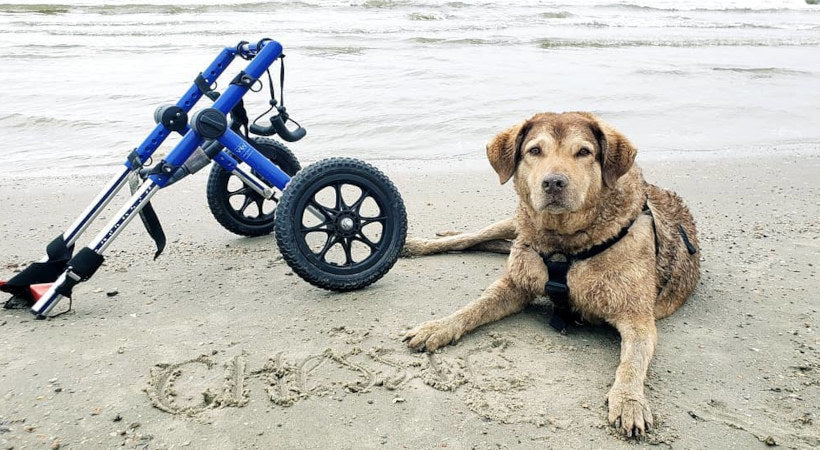Beagle Lifespan: How Long Do Beagles Live? (Life Expectancy)

7 Ways to Care for Disabled Dogs
Like all dogs, dogs with disabilities need all the love that they can get; and, they need to be as healthy as possible. As these dogs already experience difficulties in life, their owners must learn to understand these difficulties, which may be:
- Blindness
- Birth defects
- Paralysis
- Loss of Limbs
The list goes on. Therefore, it’s important to care for your pet as much as possible.
In this article, we’ll go over the seven ways that you can care for your disabled pet to ensure that they live a happy life. And, as always, if you have any questions or concerns about your pet, then feel free to consult your local vet.
1. Evaluate Your Dog's Life
Make sure that you evaluate your dog’s life. You know your dog better than anyone else. Maintaining an awareness of your dog's needs and behaviors can help your vet make the best determination for your pet. You are your dog's best advocate. In that case, consider the following:
- Is your pet still eating and drinking?
- Are they showing interest in things?
- Are they engaging with you?
As you ask yourself these questions, learn how to spot the signs, if your dog isn’t doing well:
- Disinterest
- Lethargic (moving slow)
- Unresponsive
- Experiencing pain
If anything is wrong, talk with a vet about your dog’s condition.
2. Have a Routine
Establishing a daily routine with your pet helps them develop good habits and that their everyday life has structure. Predicting what your dog’s day will be like will help them be stress-free and comfortable. Some great routines range from walking your pet early in the morning to taking them to a familiar dog park where they know some other dogs.
3. Invest in a Good Wheelchair and Harness

Canines with disabilities may experience the following:
- Pain in limbs
- Weakness
- Paralysis
As such, they might experience limited mobility – or worse, not be able to move at all. As a result, your dog will experience:
- Depression
- Lack of appetite
- Unable to enjoy life
Therefore, you’ll need to invest in a suitable wheelchair or harness, so that your dog can do things easier with the help of a mobility aid. These aids will provide full support for your dog to move around safely. Keeping your pet active will keep them healthy and happy.
4. Practice Dog Hygiene
For disabled dogs, you must do more than just brush their teeth. In fact, your dog may need more maintenance to stay healthy. Most of the time, your dog will need help with basic things like cleaning themselves, and making sure that their fur is well-kept.
There are two ways to maintain your pet’s hygiene:
- Bathe your pup, trim their fur, and clip their nails regularly.
- Or, schedule an appointment with a professional dog groomer to do all the maintenance for you.
5. Exercise
Disabled or able-bodied, all dogs need to have plenty of exercise. Just because your disabled dog might not be able to do everything, doesn’t mean that they shouldn’t be allowed to exercise, or even frolic if they want to.
For a dog with limited mobility, you may have to find them a special activity for them to do. For example, a large swimming pool simply won’t do, since your dog will need a safe platform nearby to rest on. Also, a much shorter walk would suffice, rather than a marathon.
Whichever exercise you have your pet do, make sure that they’re comfortable with doing it.
6. Practice Patience
It’s important to be patient with your dog, since they too are learning to be patient with how they’re living with their disability. Plus, you must be patient with yourself – don’t push too hard on your dog, and stress yourself out, if they don’t cooperate the first time.
7. Consult Your Veterinarian
It’s important to be patient with your dog, since they too are learning to be patient with how they’re living with their disability. Plus, you must be patient with yourself – don’t push too hard on your dog, and stress yourself out, if they don’t cooperate the first time.
Conclusion
It’s important to be patient with your dog, since they too are learning to be patient with how they’re living with their disability. Plus, you must be patient with yourself – don’t push too hard on your dog, and stress yourself out, if they don’t cooperate the first time.
Michael Dehoyos writes and edits at Dissertation writing service and Write My Assignment. He is also a lifestyle blogger for Origin Writings. As a content marketer, he helps companies improve their marketing strategies.












